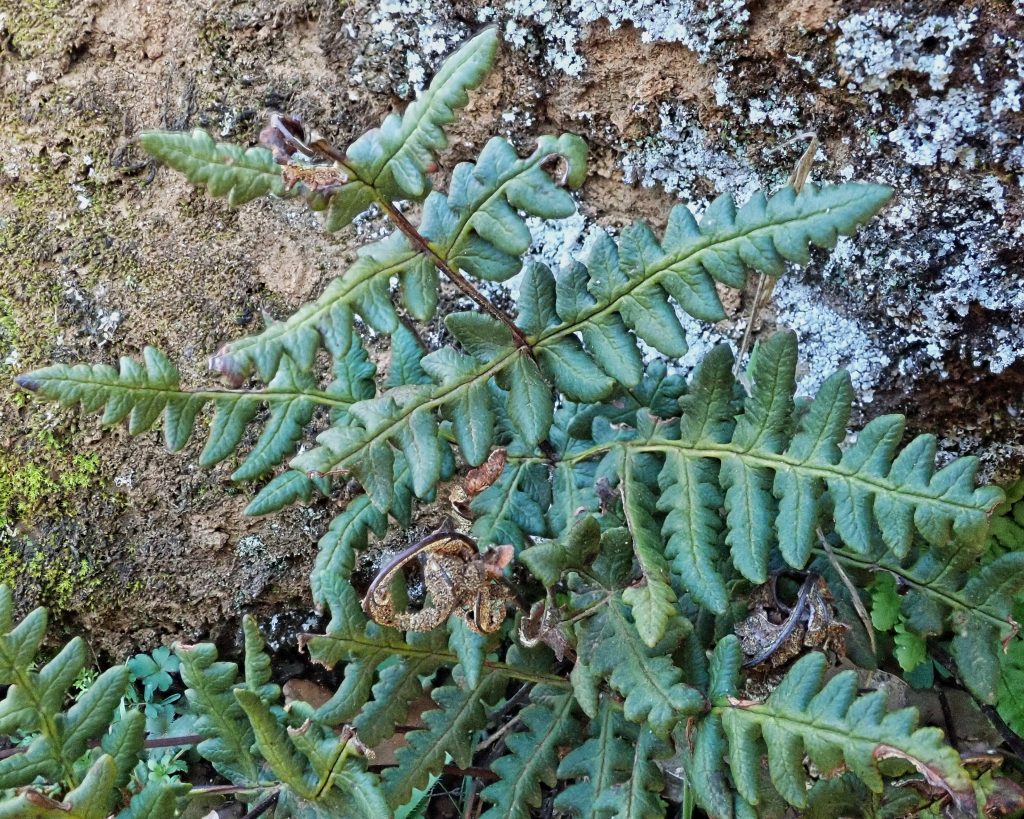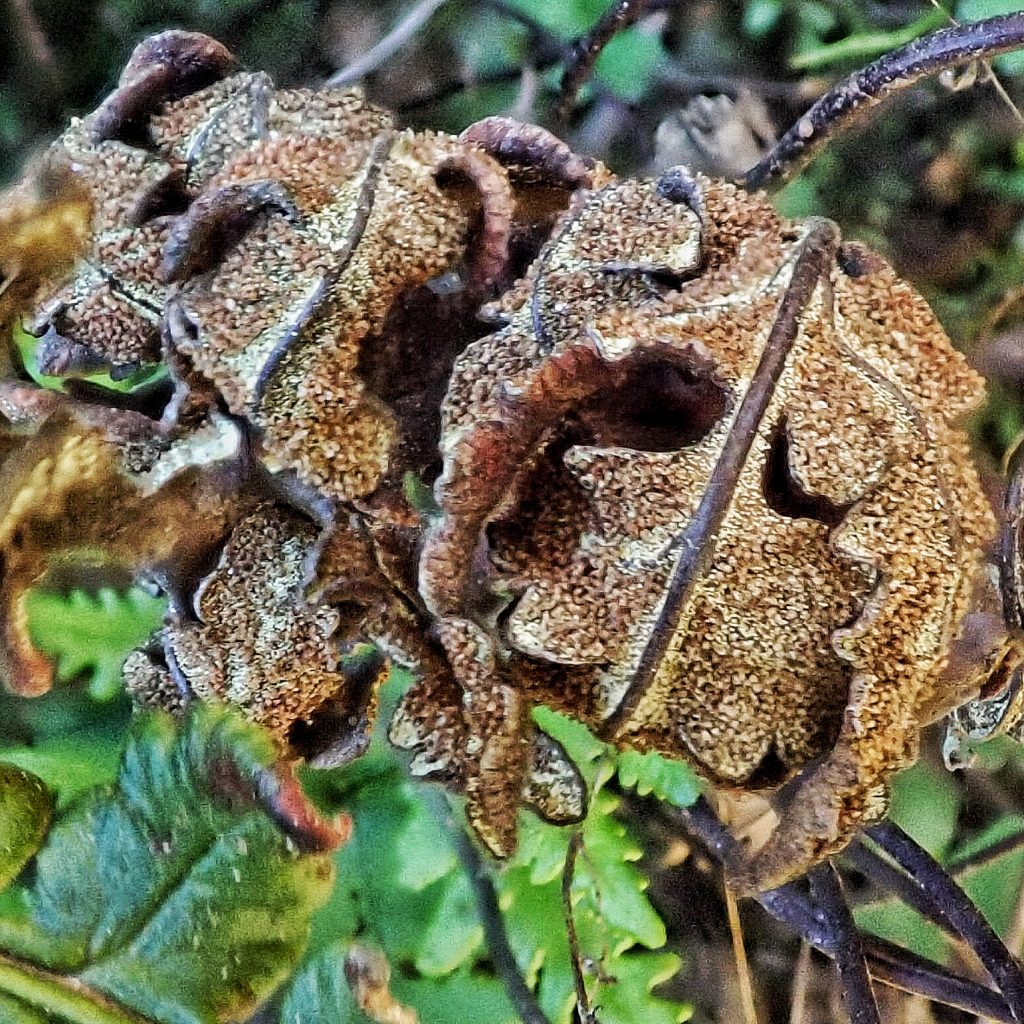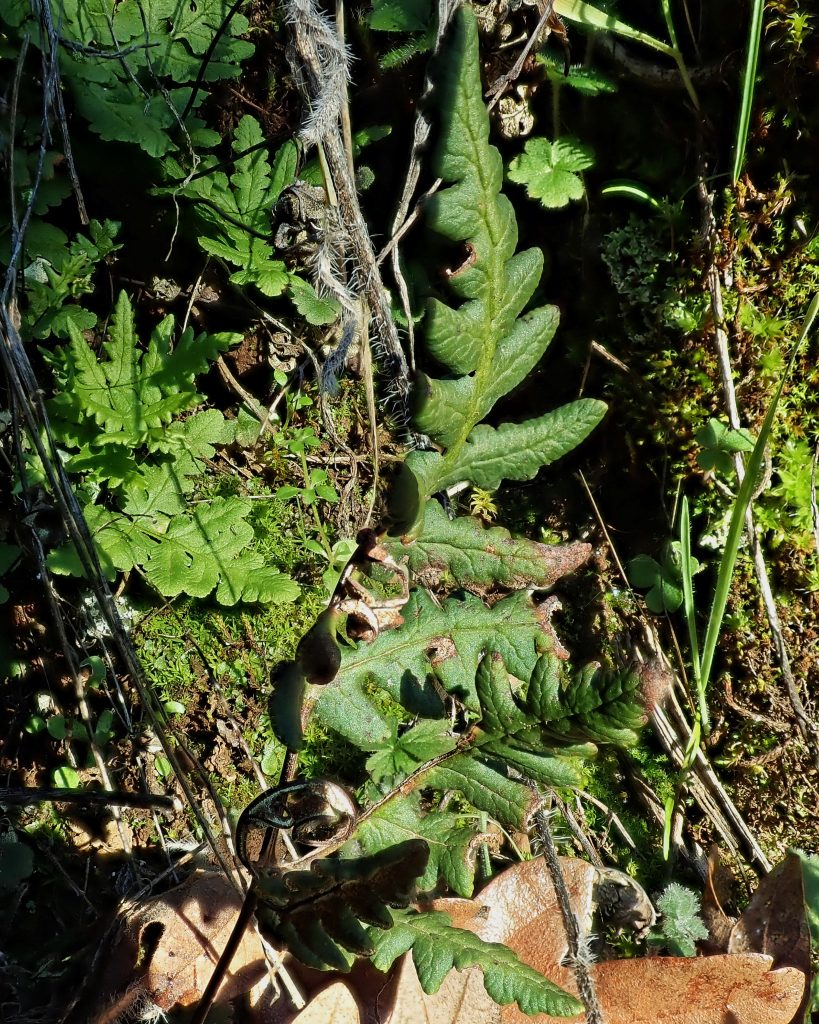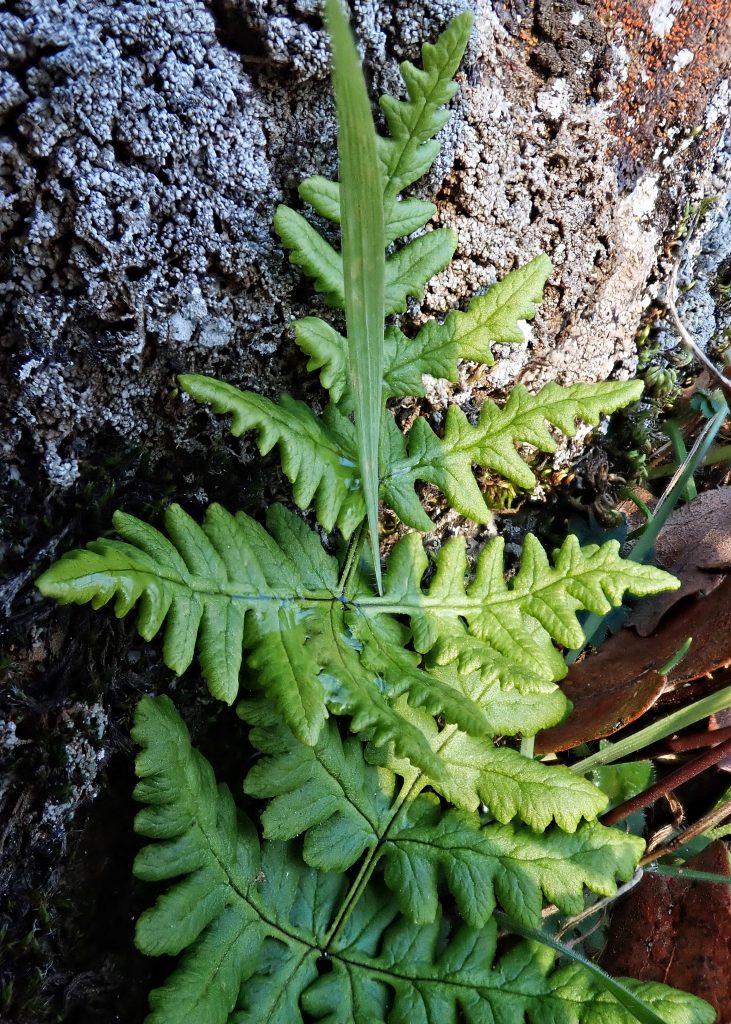
When I was looking for a remembered patch of Polystichum imbricans a couple of months ago I came across a distinctive and interesting little fern I’d never seen before. Because of its blackish (to my colorblind eyes- I’ve since been told it is a deep wine red to maroon) stipe and rachis, and waxy, metallic, yellowish coating of powder (farina) on the underside of the pinnae, I was able to figure out fairly rapidly that it was Pentagramma triangularis, which David Wagner soon confirmed for me.
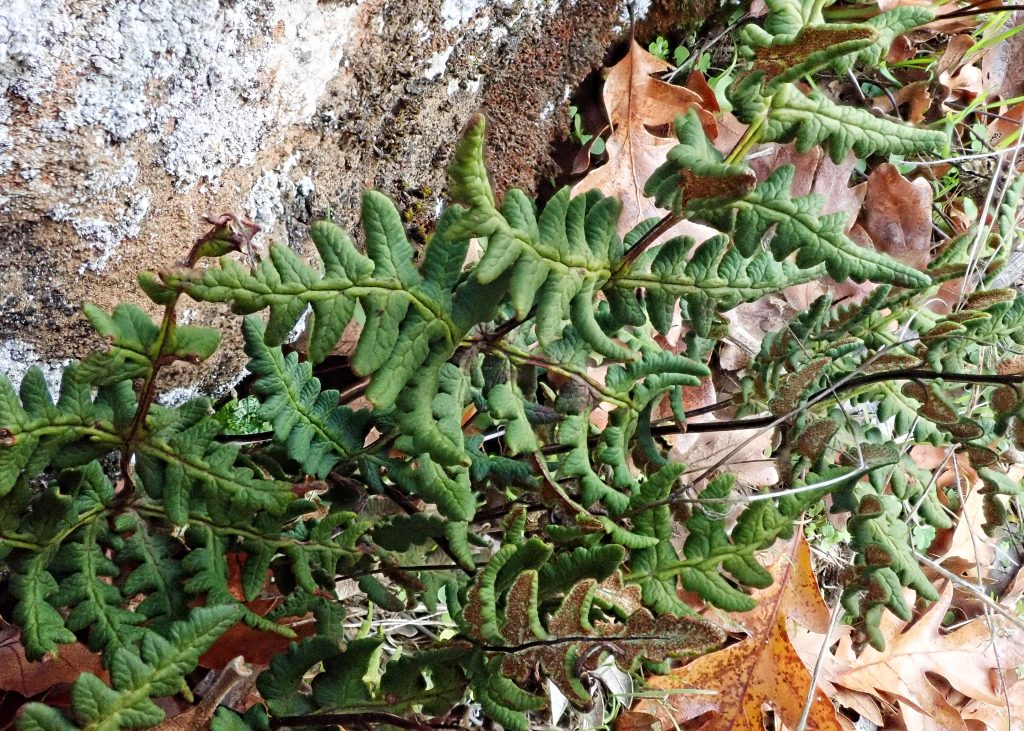
The patch I found was mostly dry and shriveled, because this fern goes dormant in the dry months, and our fall, especially in the Columbia River Gorge at Catherine Creek (near Bingen in Klickitat County) was rather on the dry side. Thus the photos I took, while good enough for identification purposes, were underwhelming in terms of showing off the beauty of this fern.
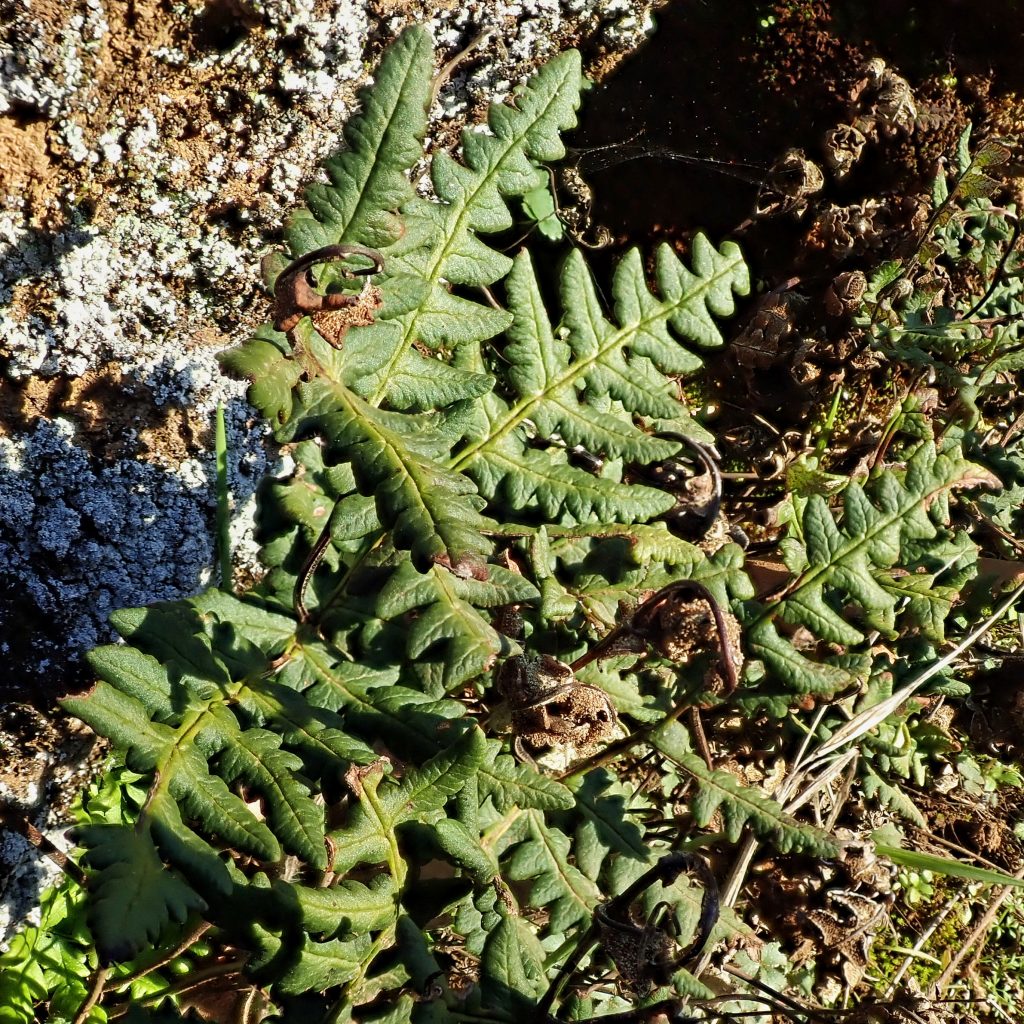
This past weekend my wife Pam and I made a trip east in a failed attempt to see a mountain goat that’s been spotted near Carson, and a mostly failed attempt to see blooming wildflowers in January. We did, however, spy a different patch of Pentagramma triangularis, which was lush and green, and made for a nice photo op.
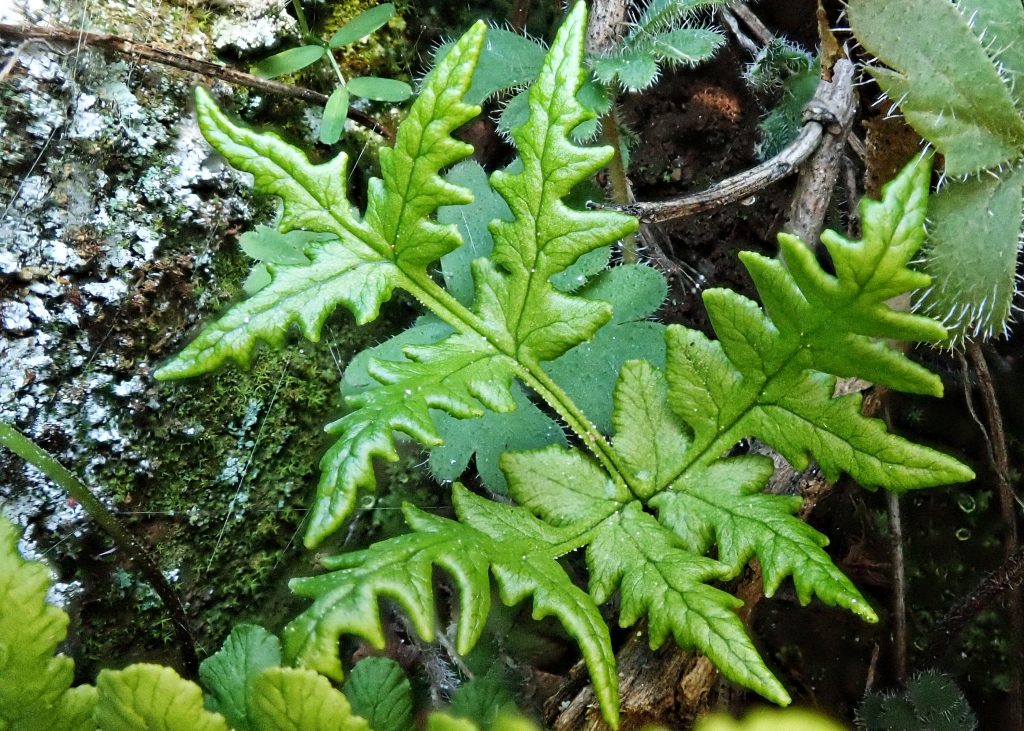
Goldback fern is frequently used as a common name for this species, even in some scientific literature. And it is an attractive and evocative name, and will not cause much confusion in our region where there are not any other members of this tribe of yellowish farina producing ferns. However it is often applied to the genus as a whole, and to members of its former genus Pityrogramma, so it can hardly be called standardized.
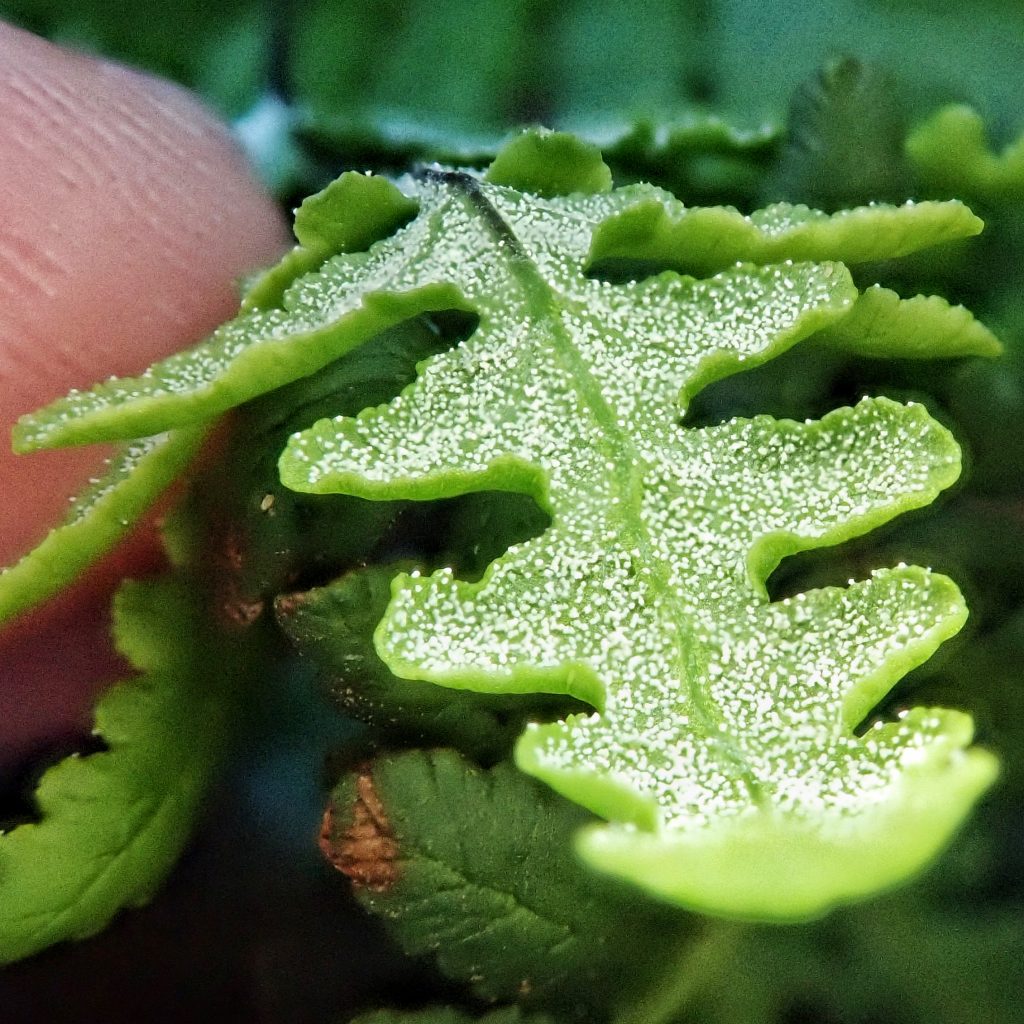
There are several subspecies of this fern, and the one in our region is P. t. triangularis. There are also tetraploid (4 sets of chromosomes) forms, and different chemotypes, some of which fluoresce under UV lights. The genus Pentagramma was split from Pityrogramma (Yatskievych/Windham/Wollenwieber; 1990), based on morphological and chromosomal differences.

Description– Uncommon but not rare, small, 2-3 times pinnate, with the stem about twice as long as the blade; stem and rachis dark reddish brown to black; blade triangular, with basal pinnae non-symmetrical, the larger pinnules on the bottom side; pinnules sessile, lobed, and joined by green wings on the rachis; sori arranged along the veins on the ventral side of the pinnules, intermixed with glands which produce the powdery, yellowish farina; blades pturn brown when dry, and the pinnae often curl and contort to expose the contrast between the brown spores and the golden farina.
Similar species– Nothing else in our region has this combination of very dark rachis and waxy, yellowish farina on the underside of the pinnae.
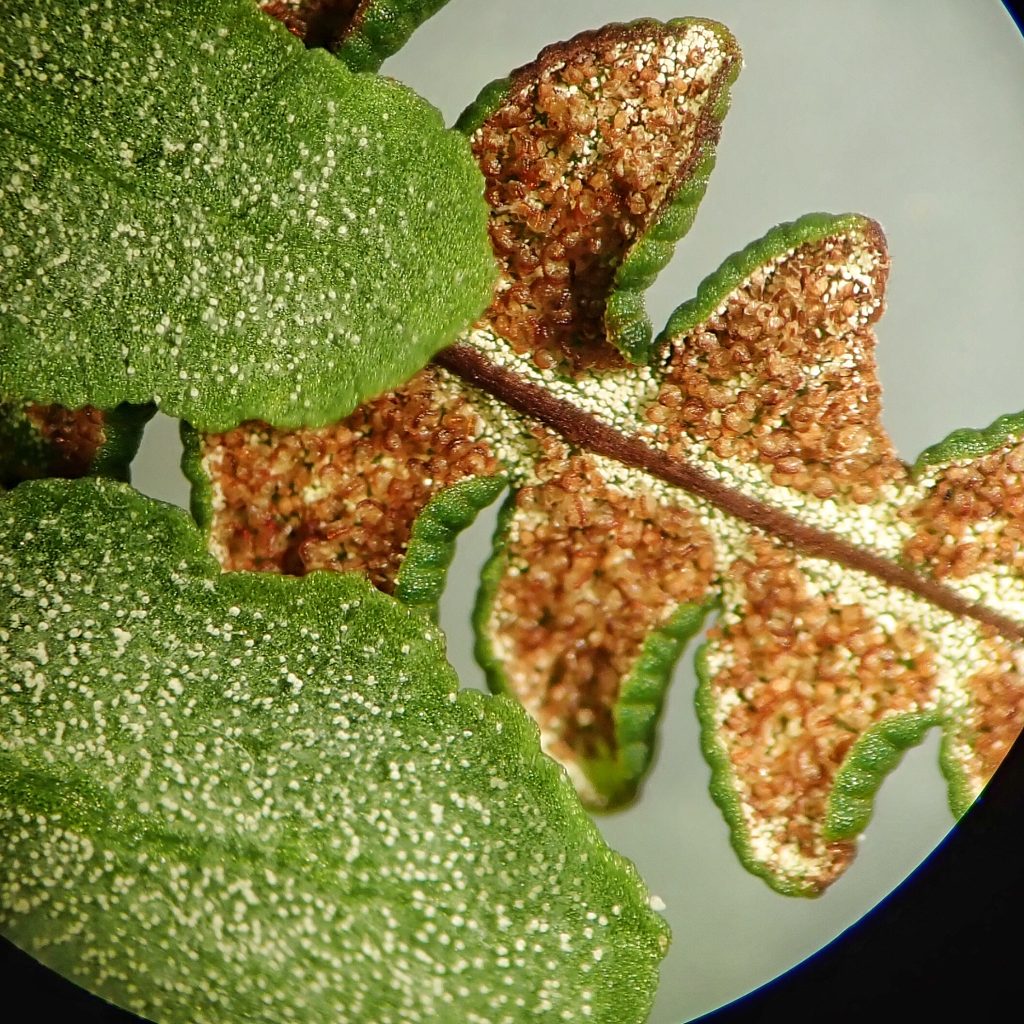
Habitat– Open, rocky sites; will tolerate some shade; often in association with oaks.
Range– Mostly west of the Cascades in our region, with some scattered populations extending east in the Columbia River Gorge, and a few other disjunct populations east of the Cascades.
Reproductive timing-Late winter into spring
Etymology of names– Pentagramma is from the Greek for 5-lined, and refers to the architecture of the fronds. The specific epithet triangularis refers to the shape of the blades.
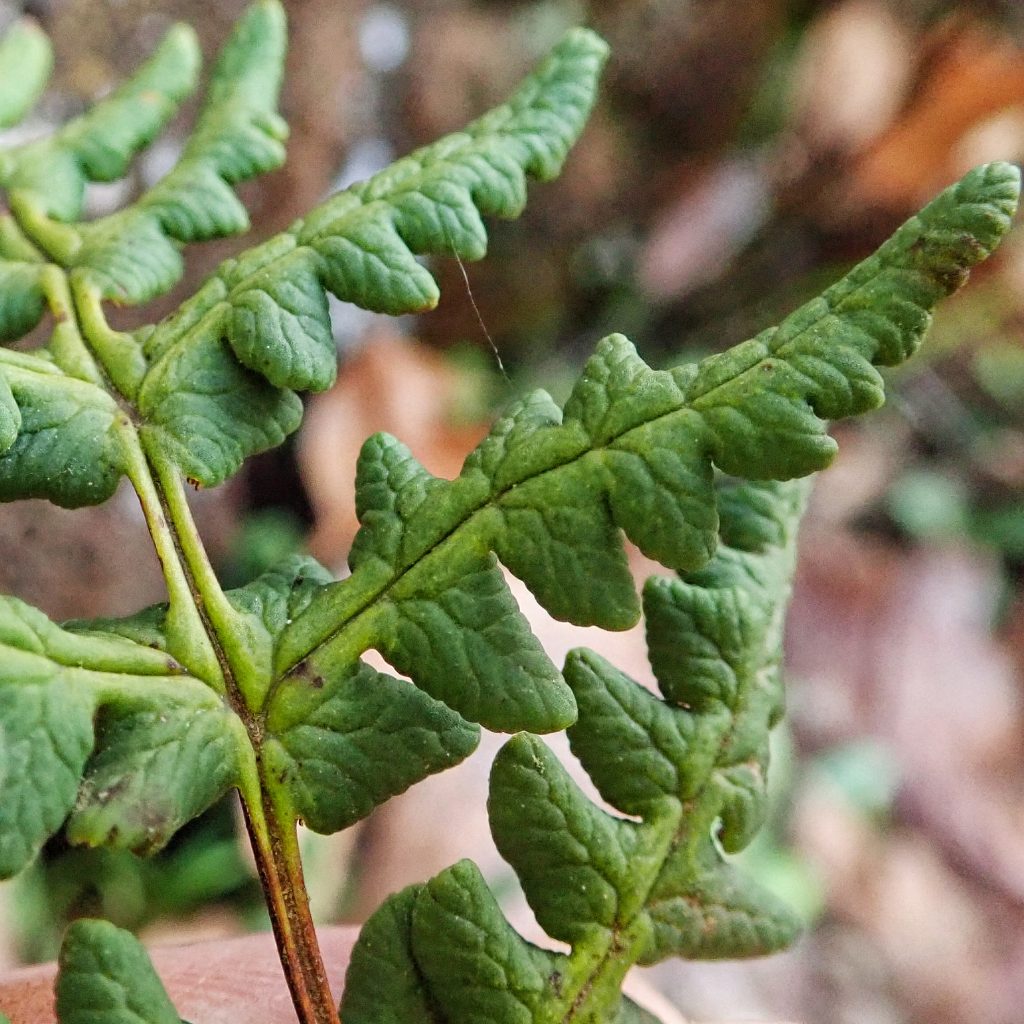
https://www.pteridoportal.org/portal/taxa/index.php?tid=3925
https://ucjeps.berkeley.edu/eflora/eflora_display.php?tid=77119
https://nativeplants.csuci.edu/pentagramma-triangularis.htm
https://en.m.wikipedia.org/wiki/Pentagramma_triangularis
